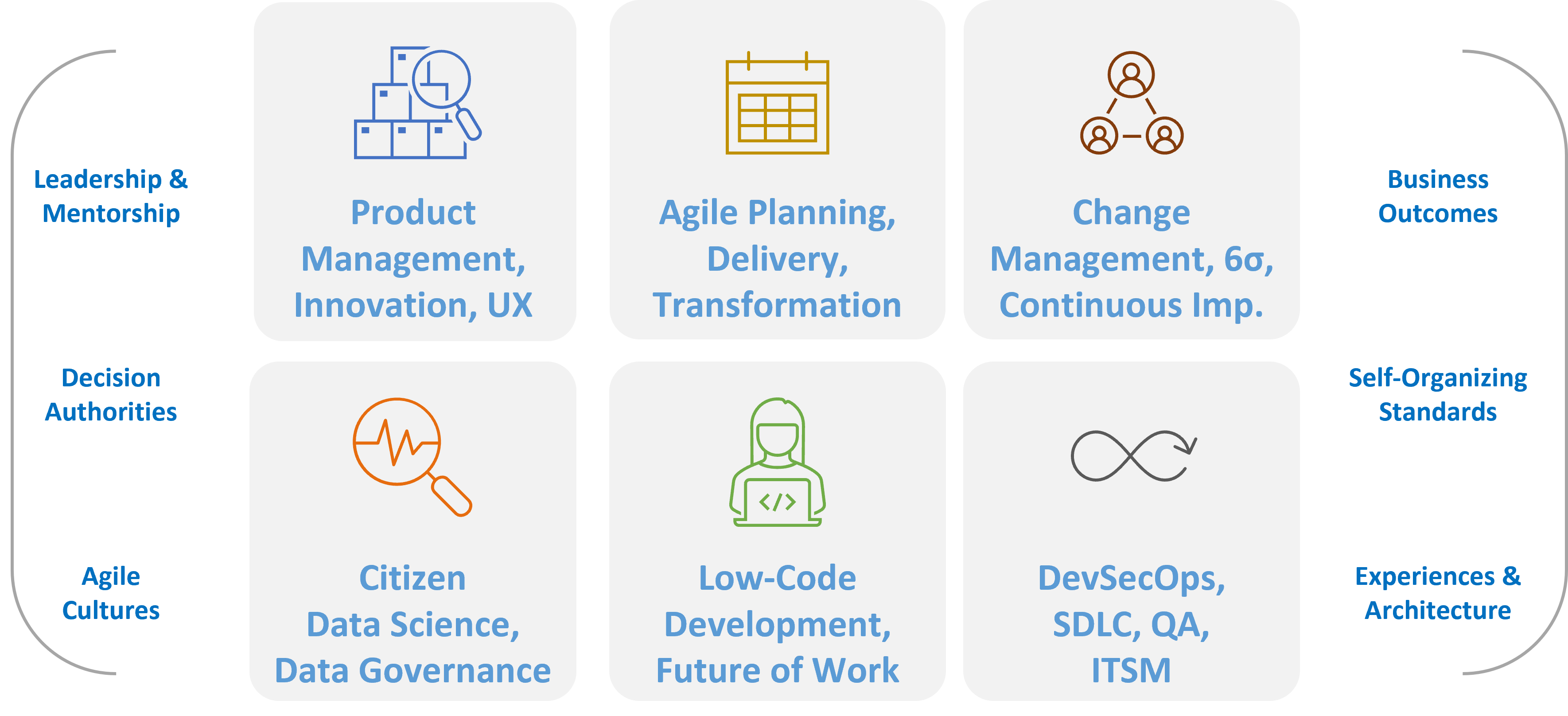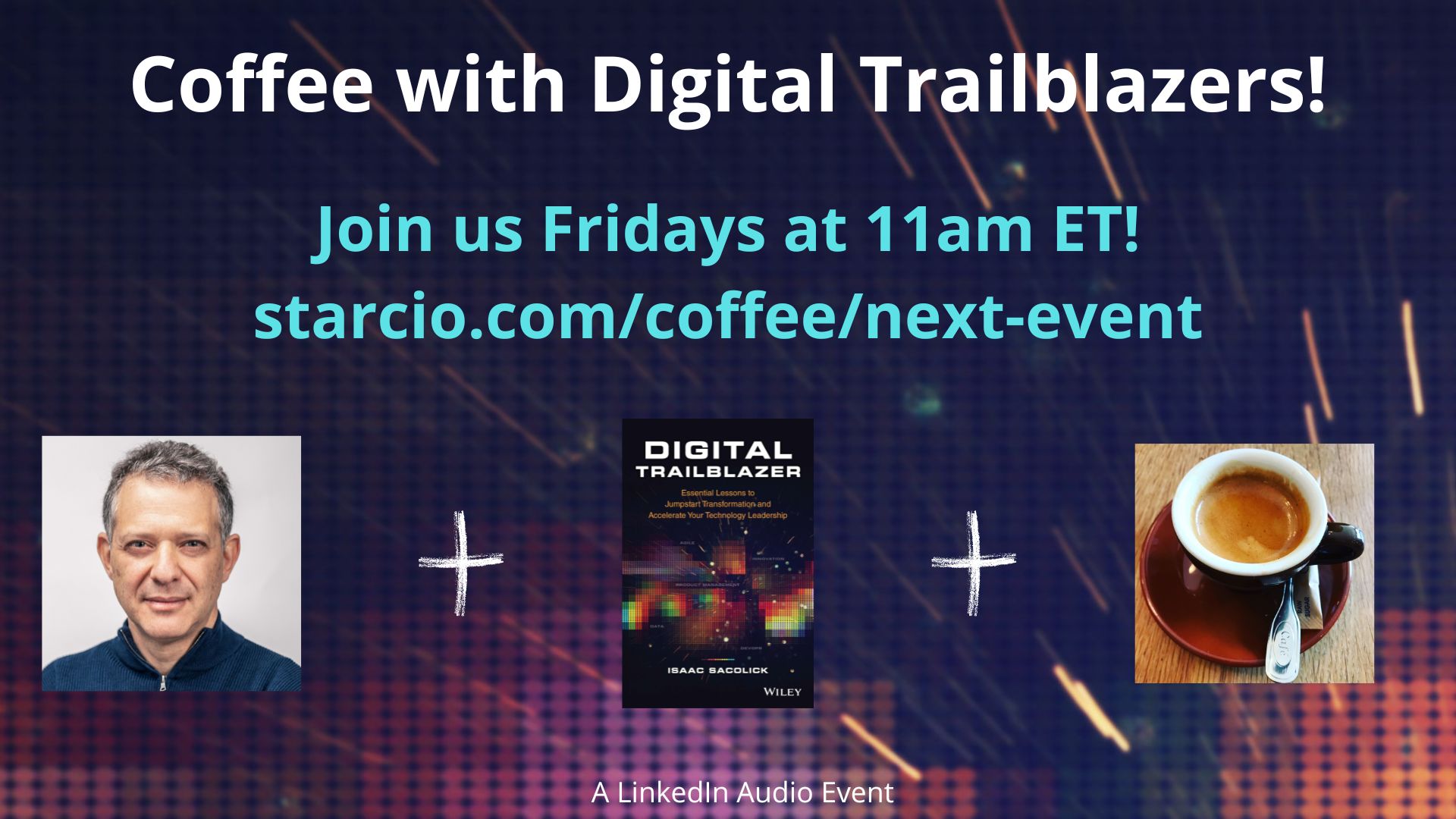Every year, a new round of surveys shows that 40-60% of organizations are struggling with digital transformation. One recent survey shows that 51% of respondents have not seen an increase in performance or profitability from digital transformation investments. Other early surveys quote that 70-90% of digital transformation initiatives have underperforming results.
My first digital transformation started in 2007, and since then, I’ve led or advised many companies on their programs, investments, and efforts. These include growing businesses, including a fintech unicorn and a global manufacturer, to more lagging nonprofits, government, and construction companies.
24 reasons why digital transformations fail
I identify several new reasons every year, and my list now totals 24 reasons
digital transformations fail, underperform, take too long, create too much
stress, or significantly exceed budgets.
My latest list includes 12 new reasons that you can see in the Driving
Digital Standup video,
24 Epic Leadership Issues that Kill Innovation and Digital
Transformation. The video is embedded below and references several of my past articles on
this subject:
- The 2018 article, the #1 reason why digital transformations fail
- My 6th episode of the Driving Digital Standup (back then, I called it 5 minutes with NYIke) on why transformations fail
- My 2023 article on CIO.com on 5 surefire ways to derail a digital transformation (without knowing it)
- A related follow-up article on CIO.com on the 7 sins of digital transformation
I know this list will continue to grow, especially as AI-driven
transformations spur new missteps.
These three practices are digital transformation success drivers
 I label many as “painful failures” because failures are more than business
issues. Underperforming digital transformation initiatives impact people –
the
Digital Trailblazers
leading the initiatives, the supporting business stakeholders, customers who
want better products, and the employees stepping up to improve operations.
I label many as “painful failures” because failures are more than business
issues. Underperforming digital transformation initiatives impact people –
the
Digital Trailblazers
leading the initiatives, the supporting business stakeholders, customers who
want better products, and the employees stepping up to improve operations.
In my book, Digital Trailblazer, I say, “I know better than to show up at the CEO’s office with a problem
but without presenting a plan or a solution.” So, with 24+ failure points,
what practices and behaviors can Digital Trailblazers adopt in their
cultures that can be success drivers? Here are three:
1. Separate problems from solutions, present tradeoffs, and drive experiments
Stakeholders and end-users often translate a digital transformation
initiative into a technology implementation. So when implementation issues
materialize, which they always will, the people involved will likely blame
the tech, the initiative leaders, the vendors/partners, the development
process, or any issue that’s not part of their responsibilities.

Digital Trailblazers avoid these pain points by writing
vision statements
that help define customer, problem statement, and business value before
identifying and researching solutions. Documenting a vision statement paves
the way to leading an
agile technology selection, where leaders use
agile planning, experiment with multiple solutions, identify tradeoffs, and carry over
this experimental culture into the implementation.
Then, when implementation issues materialize, the Digital Trailblazer can
consult stakeholders on an appropriate response, such as prioritizing new
experiments, seeking alternative solutions, or updating the vision
statement.
2. Call out and correct roadblocking behaviors
Two behaviors can truly undermine transformation initiatives, one decision, or lack thereof, at a time.
I wrote about can-kicking in Digital Trailblazer: “As leaders, the last thing we want is to do all the prep work to drive a decision, only to see our colleagues kick the can down the road and punt on it.”
Kicking the can down the road is also done by teammates, especially product
managers, architects, and program managers. Many want better information
before making decisions, while others prefer to avoid accountability and
won’t explicitly make decisions unless required.
Here’s what I wrote in the book about the required behavior change:

Decide. Decide. It’s worth repeating. Just gathering into conference rooms to talk past each other is a fail. Debate without a decision is a fail. Kicking the can down the road is a fail. Saying yes to every opportunity is a fail. The best decision is always to make a decision. Once you decide, then consider when the team leading the initiative should return, discuss progress, and propose updated plans.
When you see can-kicking, call the behavior out. Say something like, “That’s
a can-kicking down-the-road move. It will slow us down and create blocks to
our progress. Make the best decision now, and we can revisit it when
required.”
The other, somewhat related move is when people throw boulders in front of
the path, slowing down the team’s progress. The boulder is often a new
technical consideration where someone suggests implementing X before Y. The
boulder can also be a business rule exception that needs definition. But the
most common one is creating a wait state or pre-requisite for a vendor’s
response, equipment delivery, or other work outside the team’s direct
control.
While programs have impediments and roadblocks, Digital Trailblazers find
ways to work around them. When a teammate throws a boulder in the roadmap,
release plan, or sprint commitment, ask, “What’s truly blocked by the
boulder, and what work can we do that’s not impeded by it?”
3. Develop transformation competencies beyond agile frameworks
Agile methodologies, especially
continuous planning, are foundational in my two books, my nearly 20 years of writing articles,
and
StarCIO’s core competencies.
Agile is foundational to digital transformation, but there are two important
considerations about its practices in transformational initiatives.
First, adopting a cookie-cutter agile framework and training teams and
people is insufficient to develop
agile cultures and mindsets. The problem is that every digital transformation initiative is different,
so organizations must consider where standards are needed and when to
empower self-organization.
Second, agile is only one
digital transformation core competency
and requires complementary leadership, practices, and technology to help
drive successful transformational initiatives. Organizations need to evolve
their digital competencies and transformation operating model, and the
required practice areas differ by organization.
I hope you found this post useful. I guide organizations on digital transformation core competencies. Please get in touch with me if you have any questions.

|
| StarCIO Digital Transformation Core Competencies |
Join us for a future session of Coffee with Digital Trailblazers, where we discuss topics for aspiring transformation leaders. If you enjoy my thought leadership, please sign up for the Driving Digital Newsletter and read all about my transformation stories in Digital Trailblazer.
 Digital Trailblazers! Join us Fridays at 11am ET for a live audio discussion on digital
transformation topics: innovation, product management, agile, DevOps,
data governance, and more!
Digital Trailblazers! Join us Fridays at 11am ET for a live audio discussion on digital
transformation topics: innovation, product management, agile, DevOps,
data governance, and more!


No comments:
Post a Comment
Comments on this blog are moderated and we do not accept comments that have links to other websites.